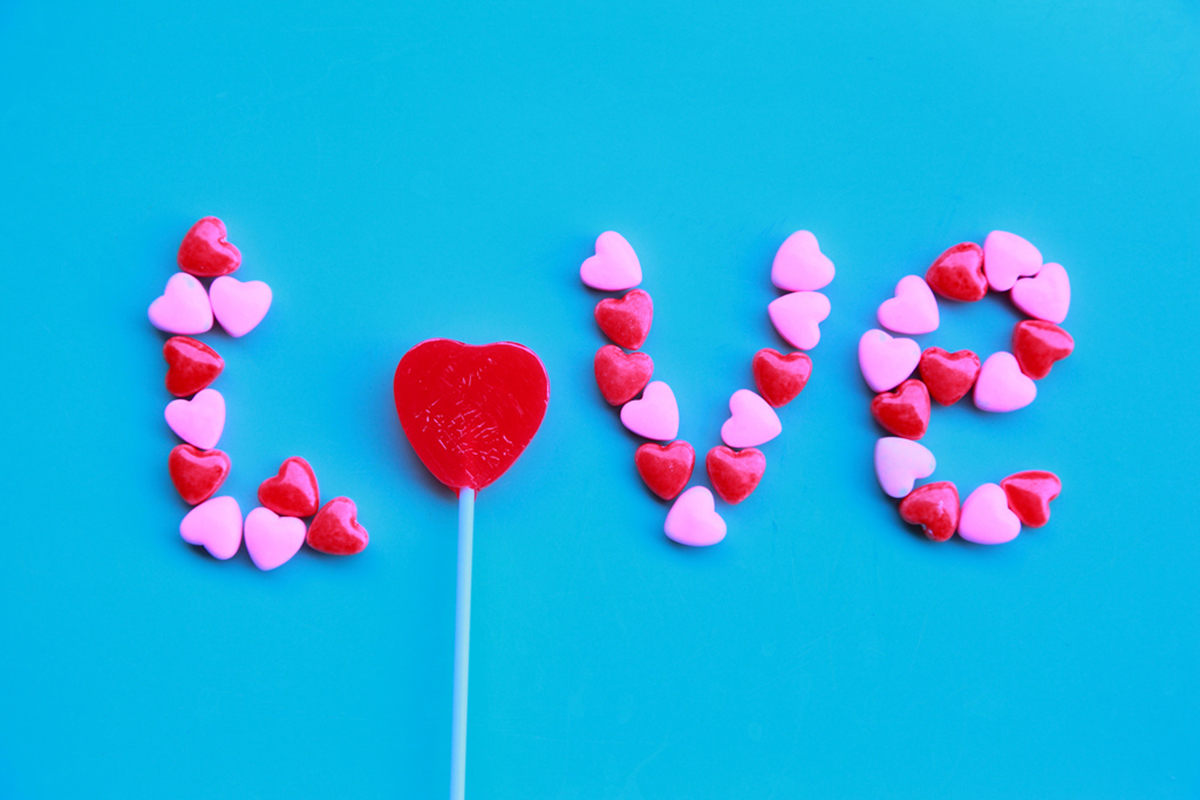Love, love, love
“Love looks not with the eyes, but with the mind. And therefore is winged Cupid painted blind.” These are the words of Helena, in A Midsummer’s Night Dream, from Shakespeare. I guess he wasn’t wrong after all, although I’m pretty sure that, with “mind”, he wasn’t exactly referring to the role that our brain plays in that complicated yet wonderful state called love.

The study of love
Neurotransmitters and body hormones are the major characters in the development of love in humans, as well as in other mammals. Neurotransmitters are released by neurons in response to external and internal stimuli. These substances are the ones that carry the messages from one neuron to another, activating specific areas of the brain.
Hormones are also biological messengers, but they are produced and released by different types of cells, in different organs. These molecules can activate neighbouring cells and can also travel in the blood stream and reach other organs, different from their releasing source. Hormones control several body functions, including those that are related to sexual arousal and pregnancy, for example.
The brain in love
Have you been in love? What kind of feelings did you experience while you were in this state? Feelings of pleasure would be the general answer to this, because love gives us pleasure (and pain sometimes).
Where does the feeling of pleasure come from? There is a specific system in our brain, known as the reward system, which among other things is in charge of codifying feelings like euphoria and indescribable happiness.
The brain chemical dopamine is the neurotransmitter that is related to feelings of reward, euphoria, desire and addiction, and it is found in high concentrations in the reward system. Dopamine is the one to blame for those butterflies in your stomach and the fact that you can’t stop smiling when you are in love.
See Also: Is Falling In Love For Real?
At the same time, serotonin, another brain chemical in control of appetite and mood, is produced in lesser amount during the first stages of love. What does this cause? Low serotonin levels have been identified in people with obsessive - compulsive disorders. But, is love an obsession? I guess it could be, because your attention is focused in the one and only person that takes your breath away. You think about your loved one every second of the day and you check your phone or your Facebook page constantly, waiting for a message from him or her.
When serotonin levels rise again, it also promotes feelings of excitement.
The Three Stages Of Love
But love doesn’t stay the same as time goes by. The feelings you experience when you meet someone are not the same to the feelings you have when the relationship grows and eventually, you reach an attachment and commitment towards the person that rocks your world. This has to do with changes in neurotransmitters and hormones levels.

Sexual drive or lust
The first stage of love is lust. Yes, that thing you feel in your body when you spot a handsome guy or a pretty woman. This may not seem very romantic, but sexual drive is the first step towards the development of deeper feelings. The main substances involved in this stage are the testosterone and estrogen, both very well known sexual hormones.
This has a biological importance, because sex drive is important for the conservation of the species. For example, testosterone levels in women increase during and around their ovulation period, increasing their sexual desire and therefore, the chances of having offspring.
Falling in love or attraction
The next stage is when you start feeling the so named butterflies in your stomach and when you can’t stop thinking about her beautiful smile, or his amazing eyes. This is what we all know as “falling in love”.
Dopamine and serotonin make the big entrance here. As I have already said, these are the brain chemicals that start working all the magic: sweaty hands, feeling breathless and even stuttering. But how do we go from lust to love?
PEA, dopamine and serotonin make us develop an attraction to that person that we were sexually driven to in the first place.
This stage may be seen as the most exciting one, because it is when you get to know the other person, go to the movies, have dinner, spend a Saturday afternoon together, and everything simply seems like a dream.
Attachment
We can’t stay in the attraction stage forever, though, because if we did, we wouldn’t be able to do anything with our brain all full with dopaminergic happiness and serotoninergic excitement. We would be daydreaming all the time! So, after attraction, that chemical bond between the lovebirds is finally achieved, and it is called “attachment”.
They are both produced by the hypothalamus and involved in the formation of very strong bonds between the couple, but also in other body functions. For example, men and women release oxytocin and vasopressin during orgasms.
See Also: The One Dependable Source of Love
Love is certainly a complicated state. We all have felt it, or we will, so there is nothing else to do but to enjoy the ride.
- ESCH, T. & STEFANO, G. B. 2005. The Neurobiology of Love. Neuro Endocrinol Lett, 26, 175-92.
- FISHER, H. E., ARON, A. & BROWN, L. L. 2006. Romantic love: a mammalian brain system for mate choice. Philos Trans R Soc Lond B Biol Sci, 361, 2173-86
- FISHER, H. E., ARON, A., MASHEK, D., LI, H. & BROWN, L. L. 2002. Defining the brain systems of lust, romantic attraction, and attachment. Arch Sex Behav, 31, 413-9
- ZEKI, S. 2007. The neurobiology of love. FEBS Lett, 581, 2575-9.
- Photo courtesy of Gabriel Flores Romero by Flickr : www.flickr.com/photos/gabofr/7098033427
- Photo courtesy of Pink Sherbet Photography by Flickr : www.flickr.com/photos/pinksherbet/4351548677


Your thoughts on this